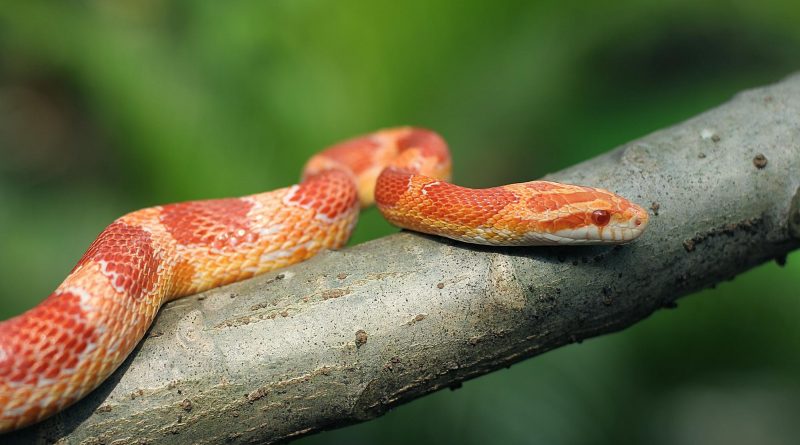Corn Snakes Are One Of The Best Domestic Pets
According to Merriam-Webster, domestication occurs when an animal transforms to aid humans. Corn snakes are similar to other pets because they share your house and provide companionship. My Pionus parrot was hand-trained after being removed from its nest as a youngster and is far milder than my corn snake.
No longer are they, wild creatures.
Corn snakes are bred such that they are harmless. They lack domestication. If a breeder discovers a snake that bites and is difficult to manage, that snake will not be bred. Because selective breeding is an essential component of domestication, only snakes that are simple to handle and make excellent pets are produced.
Corn snakes are pets because they vary from wild snakes in appearance. These creatures have nothing in common with the wild corn snake, whether they are snow corn, lavender corn, or brown and white modified corn snakes. Their return to the wild would make them stand out and easy prey for predators.
Additionally, corn snakes are bred to thrive in zoos. We choose creatures that are robust enough to survive in captivity. They are not allowed to reproduce if they cannot be maintained in a cage.
This is a very contentious viewpoint since PETA and several animal blogs assert that tarantulas are neither tame nor suitable as pets. If you seek to determine whether or not your snake is tame, you will discover a website stating that your pet snake is suffering and should be released.
Considerations Regarding Corn Snake Care
Corn snakes are simple to care for; however, they do need a few things to thrive:
Housing
Due to the tiny size of corn snakes, you should not just let your pet out into the living room and assume everything will be alright. Corn snakes may survive in tiny containers if left alone and given space to feed and move about. The cage’s bottom may be lined with paper towels or something more eye-catching; such as aspen shaving.
Extra Heat
Due to the relatively cool temperature of most American homes, you must offer a supplemental heat source. I prefer to set an incandescent bulb on the cage’s edge and keep it on while I’m home, but this is insufficient. Corn snakes should have a heating pad that heats the bottom third of their cage.
The temperature in heated regions should be between 25 and 30 degrees Celsius, and you may purchase thermostats to prevent them from growing too warm. A thermostat is essential; without one, your snake might perish from overheating. If you use simply a heating pad and do not heat the whole cage, your snake will be able to go to a cooler area as necessary.
Water
Include a bowl in the cage and maintain its cleanliness. I like to use a basin large enough for my snake to soak if necessary. Your snake may never drink before you, but he must sometimes.
Hide Spot
Two of them are required for a corn snake: one from the pool area and one from the heat mat. Snakes may hide behind “rocks” purchased at pet shops. If you let this snake into the wild, it would not survive for long.
Will I get a bite from a corn snake?
Not very probable. They could bite if they are really hungry or if they feel threatened and are unable to move. Your corn snake does this, as do most other species.
How to Prevent Bites
Your snake will be healthy if he is routinely fed and treated appropriately. The more you interact with your snake, the less unusual he will find it.
What sets a snake different from other pets?
● After feeding, snakes must be left alone for about two days. They may vomit if you touch them before they have digested their food.
● It might be prudent to let your snake alone when it is shed. This will not occur more than a couple of times every year. His eyes will get clouded before shedding. Because he cannot see properly, he won’t want to be handled.
● Once he has finished shedding, pick him up and remove any remaining skin. If you notice rough, dry skin near the tail’s tip, give the animal a hot bath until the old skin can be peeled off. Other than that, there is little grooming.
● When handling your snake, gently take it up without squeezing it and stroke it from head to tail in the direction of its scales.
What About Food?
Individuals have the greatest difficulty feeding their pets snakes. In contrast to my tegu, who would consume almost any meat placed in his dish, wild snakes learn early on to consume live prey and continue to do so throughout their lives.
Should they consume living food?
As corn snakes are often maintained as pets, educating them to accept other foods is simple. The sausages that the corn snake in the movie consumes are more costly than frozen mice, but they are easy to utilize and do not create the same issues.
What is the eating schedule?
This is not a major issue since corn snake infants only need to eat once every five days, and adults only need to eat once each week.
Carrying a Corn Snake Inside
Examine the available options and get the color morph you want the most. I believe that a hatchling is the ideal starting point. When I gave my daughter her first snake as a pet, I informed her that snakes often live for ten years, so she would have it until she was a teenager. You can find corn snakes at most pet shops and breeders if you want to keep one as a pet. You may pick from various color variants if your city offers a reptile display.

